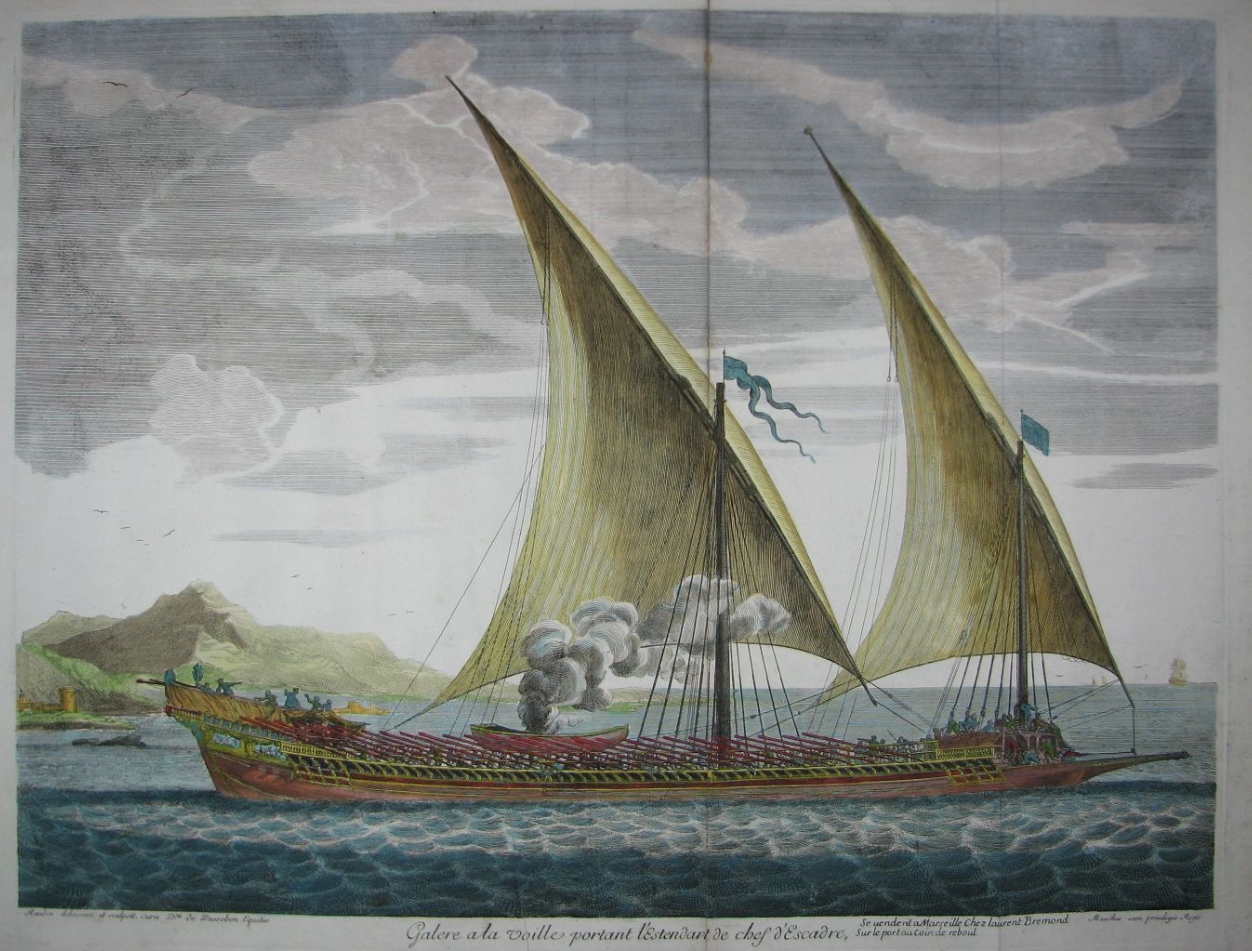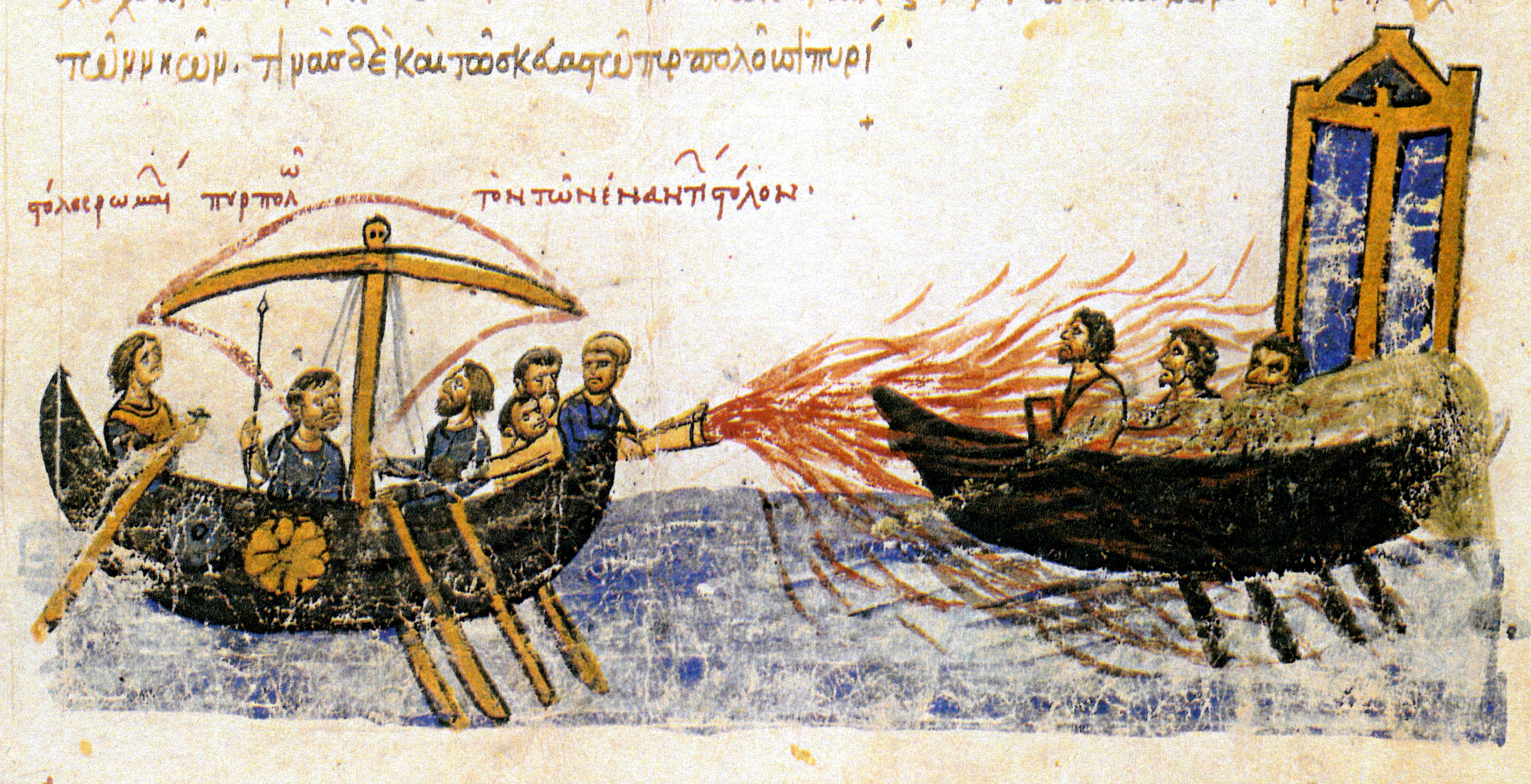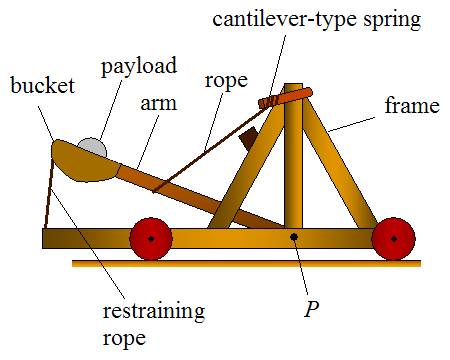|
Galleys
A galley is a type of ship optimised for propulsion by oars. Galleys were historically used for warfare, trade, and piracy mostly in the seas surrounding Europe. It developed in the Mediterranean world during antiquity and continued to exist in various forms until the early 19th century. It typically had a long, slender hull, shallow draft, and often a low freeboard. Most types of galleys also had sails that could be used in favourable winds, but they relied primarily on oars to move independently of winds and currents or in battle. The term "galley" originated from a Greek term for a small type of galley and came in use in English from about 1300. It has occasionally been used for unrelated vessels with similar military functions as galley but which were not Mediterranean in origin, such as medieval Scandinavian longships, 16th-century Acehnese ghalis and 18th-century North American gunboats. Galleys were the primary warships used by the ancient Mediterranean naval powers, ... [...More Info...] [...Related Items...] OR: [Wikipedia] [Google] [Baidu] |
Piracy
Piracy is an act of robbery or criminal violence by ship or boat-borne attackers upon another ship or a coastal area, typically with the goal of stealing cargo and valuable goods, or taking hostages. Those who conduct acts of piracy are called pirates, and vessels used for piracy are called pirate ships. The earliest documented instances of piracy were in the 14th century BC, when the Sea Peoples, a group of ocean raiders, attacked the ships of the Aegean and Mediterranean civilisations. Narrow channels which funnel shipping into predictable routes have long created opportunities for piracy, as well as for privateering and commerce raiding. Historic examples of such areas include the waters of Gibraltar, the Strait of Malacca, Madagascar, the Gulf of Aden, and the English Channel, whose geographic structures facilitated pirate attacks. The term ''piracy'' generally refers to maritime piracy, although the term has been generalized to refer to acts committed on land, ... [...More Info...] [...Related Items...] OR: [Wikipedia] [Google] [Baidu] |
Naval Ram
A ram on the bow of ''Olympias'', a modern reconstruction of an ancient Athenian trireme A naval ram is a weapon fitted to varied types of ships, dating back to antiquity. The weapon comprised an underwater prolongation of the bow of the ship to form an armoured beak, usually between in length. This would be driven into the hull of an enemy ship to puncture, sink or disable it. Antiquity It was possibly developed in late Bronze Age Egypt, but it only became widely used in later Iron Age Mediterranean galleys. The ram was a naval weapon in the Greek/ Roman antiquity and was used in such naval battles as Salamis and Actium. Naval warfare in the Mediterranean rarely used sails, and the use of rams specifically required oarsmen rather than sails in order to maneuver with accuracy and speed, and particularly to reverse the movement of a ramming ship to disentangle it from its sinking victim, lest it be pulled down when its victim sank. The Athenians were especially known fo ... [...More Info...] [...Related Items...] OR: [Wikipedia] [Google] [Baidu] |
Ancient Rome
In modern historiography, ancient Rome is the Roman people, Roman civilisation from the founding of Rome, founding of the Italian city of Rome in the 8th century BC to the Fall of the Western Roman Empire, collapse of the Western Roman Empire in the 5th century AD. It encompasses the Roman Kingdom (753–509 BC), the Roman Republic (50927 BC), and the Roman Empire (27 BC476 AD) until the fall of the western empire. Ancient Rome began as an Italic peoples, Italic settlement, traditionally dated to 753 BC, beside the River Tiber in the Italian peninsula. The settlement grew into the city and polity of Rome, and came to control its neighbours through a combination of treaties and military strength. It eventually controlled the Italian Peninsula, assimilating the Greece, Greek culture of southern Italy (Magna Graecia) and the Etruscans, Etruscan culture, and then became the dominant power in the Mediterranean region and parts of Europe. At its hei ... [...More Info...] [...Related Items...] OR: [Wikipedia] [Google] [Baidu] |
Age Of Liberty
In Swedish history, the Age of Liberty () was a period that saw parliamentary governance, increasing civil rights, and the decline of the Swedish Empire that began with the adoption of the Instrument of Government in 1719 and ended with Gustav III's self-coup in 1772. This shift of power from the monarch to parliament was a direct effect of the Great Northern War. Suffrage under the parliamentary government was not universal. Although the taxed peasantry was represented in the Parliament, its influence was disproportionately small, and commoners without taxed property had no suffrage at all. Great Northern War Following the death of Charles XI of Sweden, his young son Charles XII became king, and in 1697, when he was only 15 years old, he was proclaimed to be of age and took over the rule from the provisional government. The states in which Sweden's expansion into a great power had primarily been at the expense of Denmark and Russia, formed a coalition with Saxony two ... [...More Info...] [...Related Items...] OR: [Wikipedia] [Google] [Baidu] |
Greek Fire
Greek fire was an incendiary weapon system used by the Byzantine Empire from the seventh to the fourteenth centuries. The recipe for Greek fire was a closely-guarded state secret; historians have variously speculated that it was based on saltpeter, sulfur, or quicklime, but most modern scholars agree that it was based on petroleum mixed with resins, comparable in composition to modern napalm. Byzantine sailors would toss grenades loaded with Greek fire onto enemy ships or spray it from tubes. Its ability to burn on water made it an effective and destructive naval incendiary weapon, and rival powers tried unsuccessfully to copy the material. Name Usage of the term "Greek fire" has been general in English and most other languages since the Crusades. Original Byzantine sources called the substance a variety of names, such as "sea fire" (Medieval Greek: ), "Roman fire" ( ), "war fire" ( ), "liquid fire" ( ), "sticky fire" ( ), or "manufactured fire" ( ). History Incendiary and ... [...More Info...] [...Related Items...] OR: [Wikipedia] [Google] [Baidu] |
Catapult
A catapult is a ballistics, ballistic device used to launch a projectile at a great distance without the aid of gunpowder or other propellants – particularly various types of ancient and medieval siege engines. A catapult uses the sudden release of stored potential energy to propel its payload. Most convert Tension (mechanics), tension or Torsion (mechanics), torsion energy that was more slowly and manually built up within the device before release, via springs, bows, twisted rope, elastic, or any of numerous other materials and mechanisms which allow the catapult to launch a projectile such as rocks, cannon balls, or debris. During wars in the ancient times, the catapult was usually known to be the strongest heavy weaponry. In modern times the term can apply to devices ranging from a simple hand-held implement (also called a "slingshot") to a mechanism for Aircraft catapult, launching aircraft from a ship. The earliest catapults date to at least the 7th century BC, with Kin ... [...More Info...] [...Related Items...] OR: [Wikipedia] [Google] [Baidu] |
Late Middle Ages
The late Middle Ages or late medieval period was the Periodization, period of History of Europe, European history lasting from 1300 to 1500 AD. The late Middle Ages followed the High Middle Ages and preceded the onset of the early modern period (and in much of Europe, the Renaissance). Around 1350, centuries of prosperity and growth in Europe came to a halt. A series of famines and Plague (disease), plagues, including the Great Famine of 1315–1317 and the Black Death, reduced the population to around half of what it had been before the calamities. Along with depopulation came social unrest and endemic warfare. Kingdom of France, France and Kingdom of England, England experienced serious peasant uprisings, such as the Jacquerie and the Peasants' Revolt, as well as over a century of intermittent conflict, the Hundred Years' War. To add to the many problems of the period, the unity of the Catholic Church was temporarily shattered by the Western Schism. Collectively, those events ar ... [...More Info...] [...Related Items...] OR: [Wikipedia] [Google] [Baidu] |
High Middle Ages
The High Middle Ages, or High Medieval Period, was the periodization, period of European history between and ; it was preceded by the Early Middle Ages and followed by the Late Middle Ages, which ended according to historiographical convention. Key historical trends of the High Middle Ages include the medieval demography, rapidly increasing population of Europe, which brought about great social and political change from the preceding era, and the Renaissance of the 12th century, including the first developments of rural exodus and urbanization. By 1350, the robust population increase had greatly benefited the European economy, which had reached levels that would not be seen again in some areas until the 19th century. That trend faltered in the early 14th century, as the result of numerous events which together comprised the crisis of the late Middle Ages—most notable among them being the Black Death, in addition to various regional wars and economic stagnation. From , Europ ... [...More Info...] [...Related Items...] OR: [Wikipedia] [Google] [Baidu] |
Christian Pilgrims
Christianity has a strong tradition of pilgrimages, both to sites relevant to the New Testament narrative (especially in the Holy Land) and to sites associated with later saints or miracles. History Christian pilgrimages were first made to sites connected with the birth, life, crucifixion and resurrection of Jesus. Aside from the early example of Origen in the third century, surviving descriptions of Christian pilgrimages to the Holy Land date from the 4th century, when pilgrimage was encouraged by church fathers including Saint Jerome, and established by Saint Helena, the mother of Constantine the Great. In many places, an extensive infrastructure developed that was specifically geared towards the accommodation and consumption needs of a large number of pilgrims. In the late Middle Ages, there were organised group journeys for pilgrims, mainly by ship from various starting points to Israel. Purpose and motivations The purpose of Christian pilgrimage was summarized by Pope B ... [...More Info...] [...Related Items...] OR: [Wikipedia] [Google] [Baidu] |
Passenger Transport
Transport (in British English) or transportation (in American English) is the intentional Motion, movement of humans, animals, and cargo, goods from one location to another. Mode of transport, Modes of transport include aviation, air, land transport, land (rail transport, rail and road transport, road), ship transport, water, cable transport, cable, pipeline transport, pipelines, and space transport, space. The field can be divided into infrastructure, vehicles, and operations. Transport enables human trade, which is essential for the development of civilizations. Transport infrastructure consists of both fixed installations, including roads, railways, airway (aviation), airways, waterways, canals, and pipeline transport, pipelines, and terminals such as airports, train station, railway stations, bus stations, warehouses, trucking terminals, refueling depots (including fuel docks and fuel stations), and seaports. Terminals may be used both for the interchange of passengers and ... [...More Info...] [...Related Items...] OR: [Wikipedia] [Google] [Baidu] |
Becalmed ''
{{Disambiguation ...
Becalmed may refer to: *'' En rade'' or ''Becalmed'', an 1887 novel by Joris-Karl Huysmans *"Becalmed", a song from the Brian Eno album ''Another Green World ''Another Green World'' is the third solo studio album by English musician Brian Eno ( mononymously credited as "Eno"), released by Island Records on 14 November 1975. The album marked a transition from the rock-based music of Eno's previous r ... [...More Info...] [...Related Items...] OR: [Wikipedia] [Google] [Baidu] |






